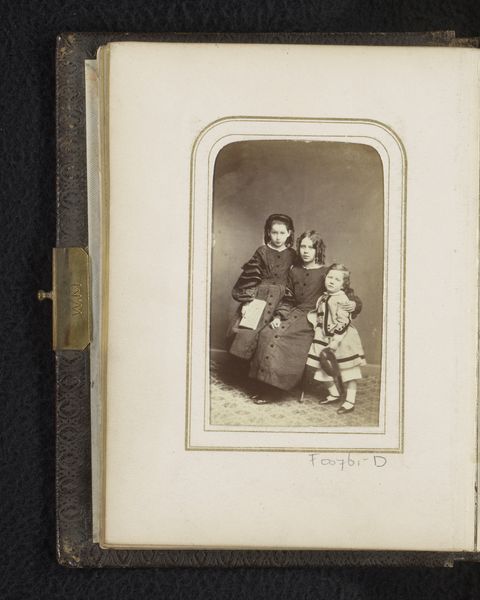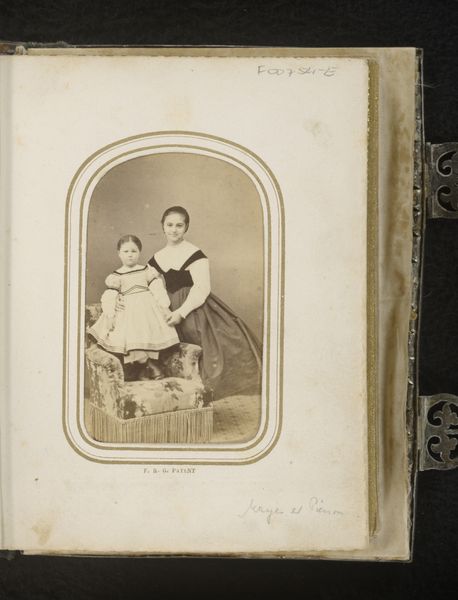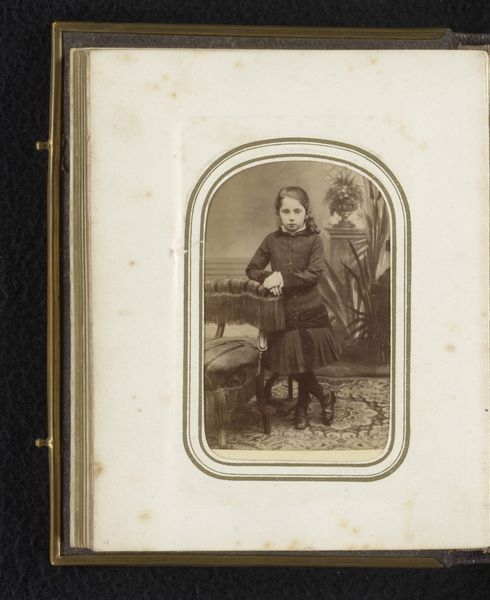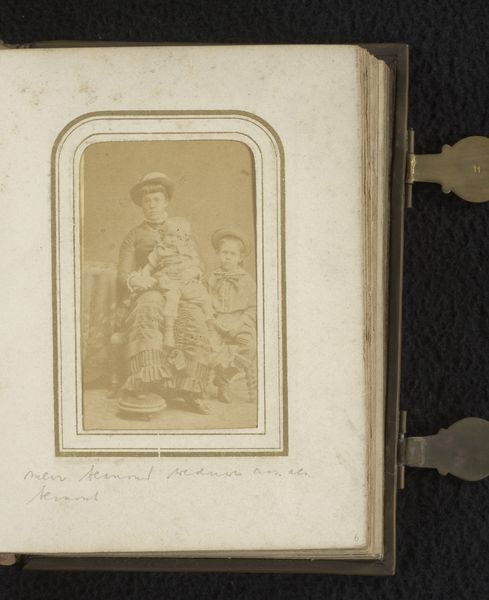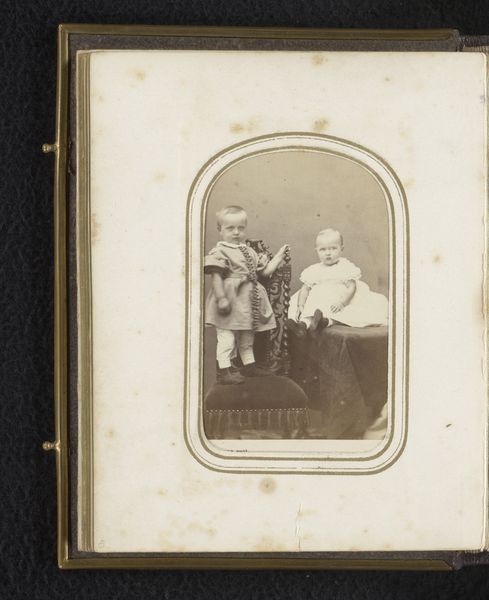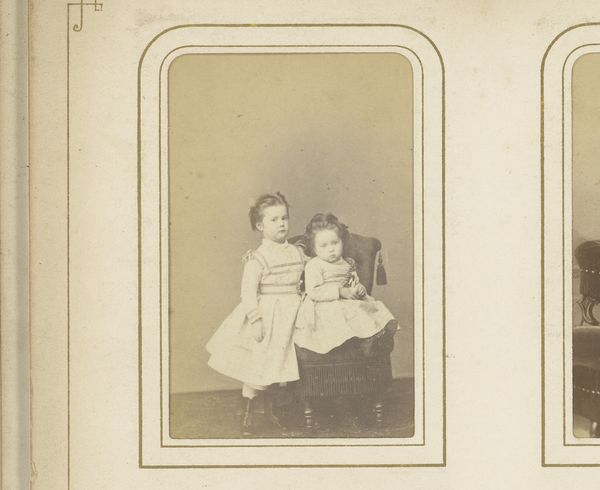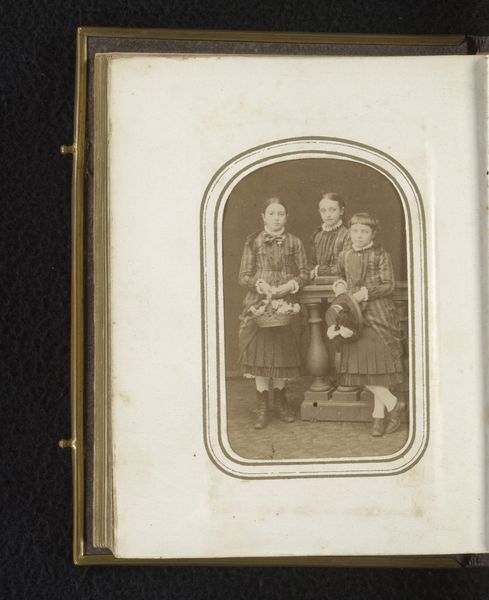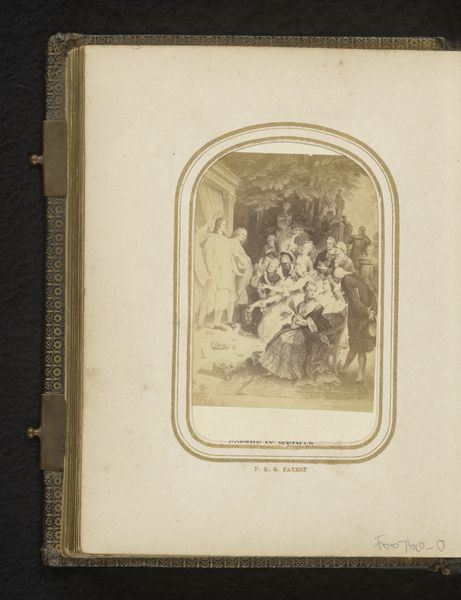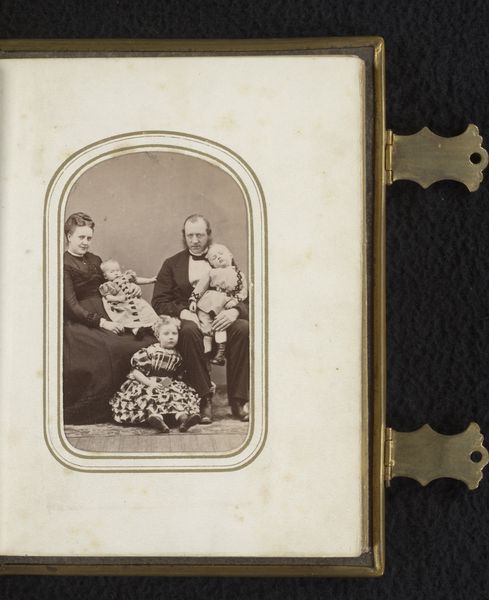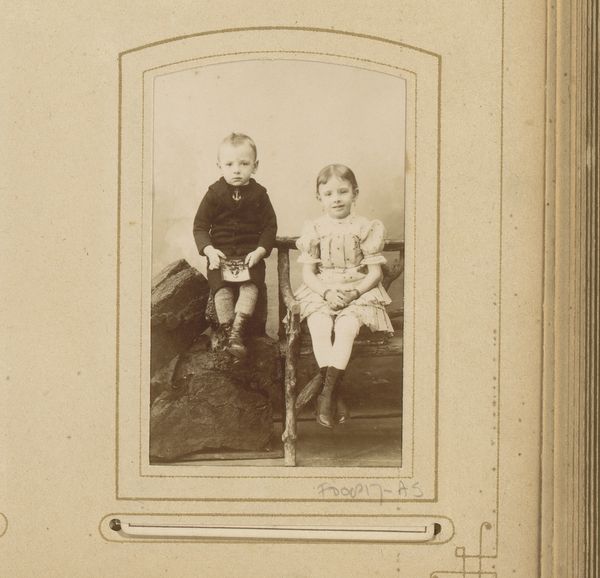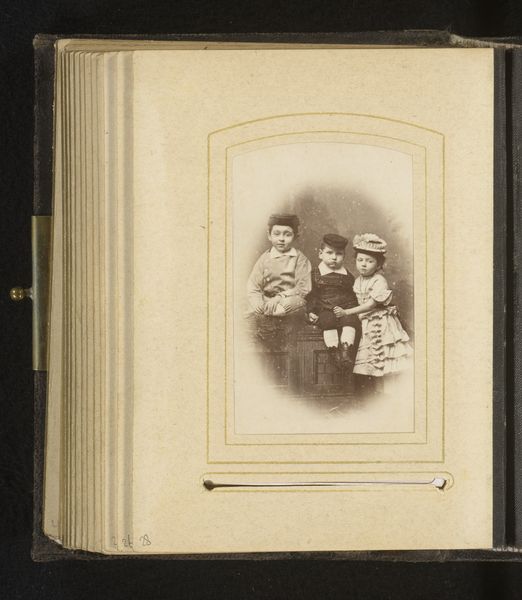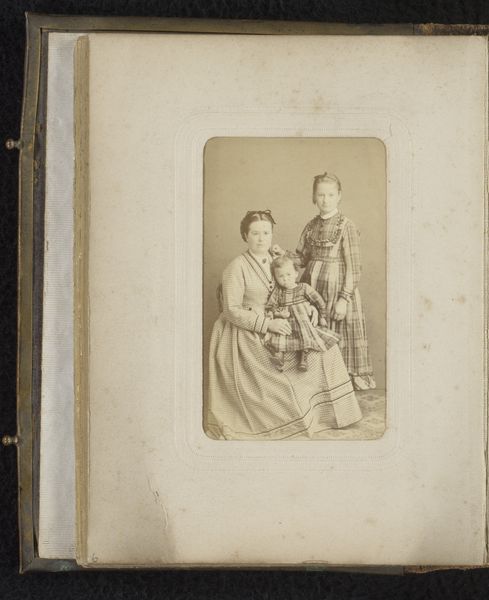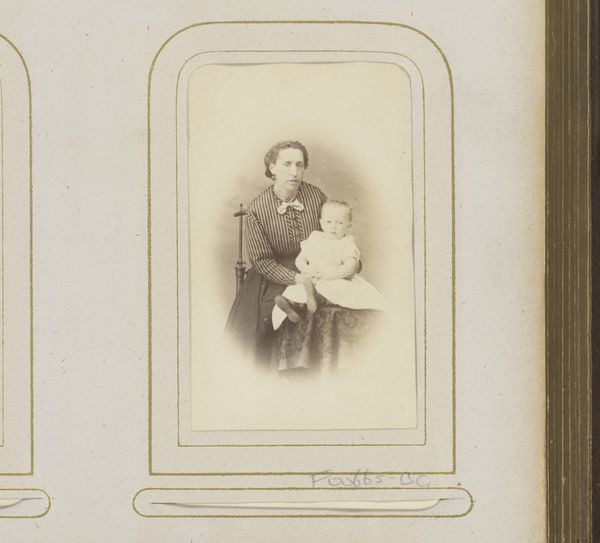
photography, albumen-print
#
portrait
#
photography
#
coloured pencil
#
watercolor
#
albumen-print
Dimensions: height 84 mm, width 50 mm
Copyright: Rijks Museum: Open Domain
Curator: This is a "Family Portrait of a Man, a Woman, and Three Children," dating roughly between 1860 and 1890. It's an albumen print, a very common photographic process in that era. Editor: There’s a palpable sense of gravity here. It feels posed and quite formal, which I suppose is characteristic of photographic portraits from this period, but you can almost sense the weight of societal expectation pressing down on them. Curator: Absolutely. Early photography was expensive and time-consuming. These weren't snapshots. A family portrait like this signaled social status and permanence. The albumen process itself involved coating paper with egg white to create a glossy surface to hold the photographic image, revealing the economic value in production. Editor: Interesting how this "permanence" is constructed through layers of material. The albumen, of course, but also consider the clothes – heavy fabrics, tailored suits for the man, elaborate dresses for the women and children. These aren't everyday garments; they’re almost performative. Curator: Indeed. And the performativity extends to their poses and expressions. Stoicism was valued. This family wanted to project an image of respectability. Family portraits, especially for middle-class Victorian society, represented social standing and idealized domesticity. Editor: The little girl's plaid dress disrupts that formality slightly, introducing a more individualized, less regimented detail amidst the stern composure of the adults and older children. It emphasizes the materiality of the fabric itself. Curator: It certainly adds a textural element to the composition. Consider, too, the historical context. Plaid wasn’t merely a design; it often carried significant cultural and even political weight. Its inclusion perhaps references the family's own history or affiliations. Editor: I'm drawn to how the family is placed within a framing element inside the album. The portrait itself acts almost as a manufactured window to observe the image, while, at the same time, its physical, almost handcrafted texture invites one to perceive this historical object as a cultural construction that extends beyond its internal characters and scenes. Curator: Precisely. It highlights how we memorialize history. This one photo allows one to reconsider 19th-century photographic processes as well as ponder their connection to socio-economic history, which can be lost when dealing with more widely publicized and familiar oil portraits of aristocratic subjects, for instance. Editor: Well said. It makes one reconsider portraiture.
Comments
No comments
Be the first to comment and join the conversation on the ultimate creative platform.
